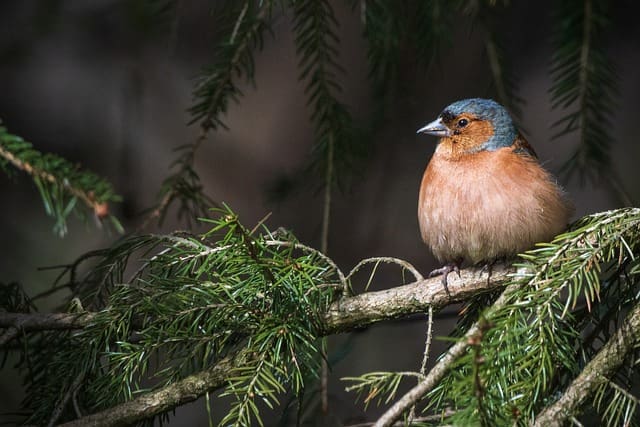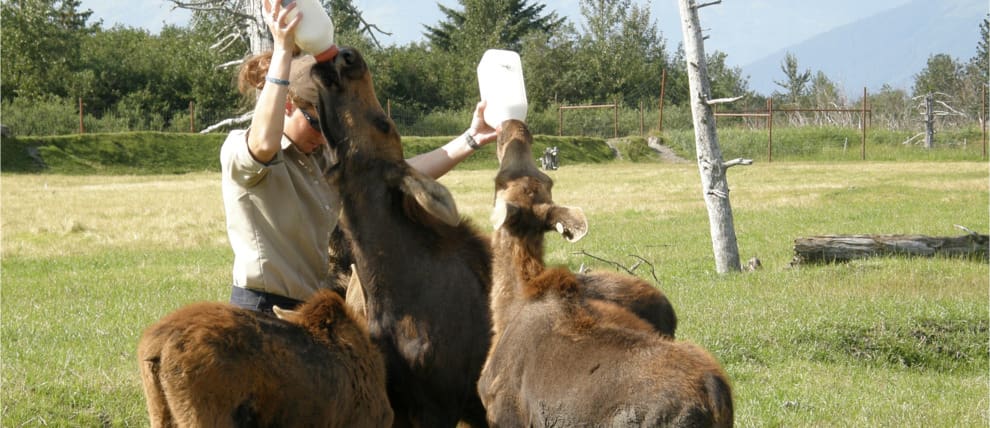Travel
8 Critical Roles You Play as a Wildlife Rescue Volunteer


As a wildlife rescue volunteer, you take on a multitude of critical roles that are essential for the well-being of the animals and the ecosystems they inhabit. These roles go beyond the initial excitement of rescuing an animal in distress and require a deep understanding of the complexities involved in wildlife rehabilitation.
From providing animal care to developing release strategies, your impact as a volunteer extends far beyond the immediate rescue mission. Each role is interconnected, playing a crucial part in the larger effort to conserve and protect wildlife.
Understanding and embodying these roles is not only fulfilling but also vital for the success of wildlife rescue efforts.
Key Takeaways
- Wildlife rescue and rehabilitation centers provide specialized care and treatment for injured, sick, or orphaned wildlife, with the aim of releasing them back into their natural habitats.
- Wildlife rescue volunteers play a crucial role in coordinating emergency response for swift and effective animal rescue, ensuring the safety of both rescuers and distressed animals.
- Effective animal handling techniques and transportation logistics are essential for the prompt and safe transfer of distressed animals, taking into consideration their specific needs and complying with regulations and permits.
- Veterinary support and release strategies are vital in providing medical care and monitoring the recovery progress of rescued wildlife, as well as planning for successful rehabilitation and release back into the wild.
Rehabilitation Centers
Rehabilitation centers play a crucial role in providing specialized care and treatment for injured, sick, or orphaned wildlife, aiming to ultimately release them back into their natural habitats. These centers are the pivotal link between the rescue of wildlife and their successful return to the wild.
Wildlife brought to these centers are often in critical condition, requiring immediate medical attention and specialized care. The dedicated staff and volunteers at these centers work tirelessly to provide round-the-clock care, nursing the animals back to health and helping them regain their natural behaviors and instincts. Through a combination of veterinary care, proper nutrition, and rehabilitation exercises, these centers strive to ensure that the wildlife under their care can once again thrive in the wild.
Moreover, rehabilitation centers also serve as educational hubs, raising awareness about the threats faced by wildlife and the importance of conservation. By engaging with the public, they inspire a sense of responsibility and stewardship towards wildlife and their habitats, empowering individuals to take action for the freedom and preservation of these magnificent creatures.
Animal Care
Animal care within wildlife rehabilitation centers involves the provision of specialized and attentive treatment to ensure the physical and behavioral well-being of the wildlife under their care. This responsibility encompasses a range of tasks, including medical treatment, behavioral enrichment, and nutritional support. Wildlife rescue volunteers play a crucial role in providing this care, as they are often directly involved in the day-to-day management of the animals.
Medical treatment is a fundamental aspect of animal care in wildlife rehabilitation centers. Volunteers assist in administering medication, cleaning wounds, and monitoring the health status of the animals. Additionally, they are involved in providing behavioral enrichment activities to ensure the mental well-being of the wildlife. This may involve creating stimulating environments that mimic natural habitats, offering toys for mental stimulation, and implementing training exercises to maintain the animals’ natural behaviors.
Furthermore, ensuring proper nutrition is essential for the recovery of wildlife. Volunteers assist in preparing and providing appropriate diets, monitoring food intake, and addressing any nutritional deficiencies.
Rescue Missions
When it comes to wildlife rescue missions, emergency response coordination plays a crucial role in ensuring the swift and effective rescue of animals in distress.


Additionally, volunteers must be well-versed in animal handling techniques to safely manage and transport injured or displaced wildlife.
The logistics of transportation, including the use of specialized vehicles and equipment, are also paramount for successful rescue missions.
Emergency Response Coordination
In the event of a wildlife emergency, a well-coordinated rescue mission is essential to ensure the swift and safe retrieval of distressed animals. Emergency response coordination involves the seamless integration of various stakeholders, including wildlife rescue volunteers, local authorities, and veterinary professionals.
Effective communication and quick decision-making are paramount during these high-pressure situations. Volunteers play a crucial role in liaising with relevant agencies, organizing transportation, and mobilizing necessary resources. Furthermore, they must ensure that safety protocols are strictly adhered to, minimizing risks to both the rescuers and the animals.
Timely and efficient coordination is the key to successful wildlife rescue missions, increasing the likelihood of positive outcomes for the distressed wildlife. As wildlife rescue volunteers, it is our responsibility to be prepared and proactive in our emergency response efforts, ultimately contributing to the conservation of wildlife freedom.


Animal Handling Techniques
During wildlife rescue missions, employing effective and humane handling techniques is essential to ensure the safety of both the rescuers and the distressed animals. Proper animal handling techniques are crucial in minimizing stress and preventing further injury to the animals.
When approaching distressed wildlife, it is vital to move slowly and calmly, avoiding sudden movements that could startle or agitate the animal further. Utilizing appropriate capture equipment, such as nets, poles, or gloves, can aid in safely securing the animal without causing harm.
Additionally, understanding the behavior and body language of different species is imperative for successful animal handling. It is essential to prioritize the welfare of the animal, and handling should always be done with the utmost care and respect.
Transportation Logistics
Efficient coordination of transportation logistics is paramount for successful wildlife rescue missions, ensuring prompt and safe transfer of distressed animals to appropriate care facilities.
Wildlife rescue volunteers are crucial in this aspect, as they are responsible for arranging and executing the transportation of injured or orphaned animals. This involves having a well-maintained and properly equipped vehicle, understanding the specific needs of different wildlife species during transport, and ensuring compliance with regulations and permits.


Additionally, volunteers must be prepared to navigate challenging terrains and adverse weather conditions while prioritizing the welfare of the animals. Attention to detail, timely communication with rescue centers, and the ability to make quick decisions are essential for a successful transportation logistics plan.
As wildlife rescue volunteers, it is our duty to ensure that every animal receives the care it desperately needs.
Veterinary Support
Volunteering in veterinary support for wildlife rescue efforts requires a deep understanding of animal care and medical procedures. As a wildlife rescue volunteer, your role in veterinary support is crucial for the well-being and rehabilitation of injured or orphaned wildlife.
Here are key responsibilities in this role:
- Assisting with Medical Procedures: This involves helping veterinarians with medical examinations, administering medications, and assisting in surgeries when necessary.
- Monitoring Animal Recovery: Wildlife volunteers play a vital role in monitoring the recovery progress of animals under veterinary care, observing their behavior, and reporting any concerns to the veterinary team.
- Providing Rehabilitation Support: This includes assisting in the feeding, cleaning, and enrichment activities for animals undergoing rehabilitation, as prescribed by the veterinary team.
- Educating the Public: Volunteers also play a critical role in educating the public about wildlife health and conservation, raising awareness about the importance of veterinary care in wildlife rescue efforts.
Release Strategies
The successful rehabilitation of wildlife in veterinary care sets the stage for the meticulous planning and implementation of release strategies aimed at ensuring the animals’ smooth transition back into their natural habitats. Release strategies are crucial in ensuring the successful reintegration of wildlife into the wild.


Factors such as the species, age, health status, and familiarity with the natural environment play significant roles in determining the appropriate release method. Soft releases, involving a gradual acclimatization to the wild, are often preferred for animals that have spent an extended period in captivity. This method allows them to adapt to their natural surroundings at their own pace.
Hard releases, on the other hand, involve releasing animals directly into their natural habitat. However, careful consideration must be given to the time, location, and environmental conditions to maximize the chances of a successful release.
Ultimately, the goal of release strategies is to afford wildlife the freedom to thrive in their natural habitats, contributing to the preservation of ecological balance and biodiversity.
Species Reintroduction
Successfully reintroducing species into their native habitats requires a thorough understanding of the ecological dynamics and behavioral patterns of the target species. As a wildlife rescue volunteer involved in species reintroduction, your role is crucial in ensuring the success of this delicate process. Here are key responsibilities to consider:
- Habitat Assessment: Conduct thorough assessments of the target habitat to ensure it can support the reintroduced species. Consider factors such as food availability, water sources, and shelter to determine the suitability of the environment.
- Behavioral Monitoring: Continuously monitor the behavior of the reintroduced species to assess their adaptation to the environment. This involves tracking their movement patterns, foraging behavior, and social interactions to ensure their successful reintegration into the ecosystem.
- Predator Control: Implement strategies to mitigate potential threats from predators that could jeopardize the survival of the reintroduced species. This may involve the use of deterrents, habitat modifications, or predator removal in extreme cases.
- Community Engagement: Engage with local communities to raise awareness about the importance of species reintroduction and garner support for conservation efforts. Foster positive relationships with stakeholders to ensure the long-term protection of the reintroduced species and their habitat.
Sanctuary Maintenance
Sanctuary maintenance plays a pivotal role in ensuring the well-being of the wildlife residing in the sanctuary.


Habitat upkeep involves managing vegetation, water sources, and nesting areas to mimic natural conditions.
Additionally, facility repairs are crucial for creating a safe and secure environment for the animals, ultimately contributing to their physical and psychological welfare.
Habitat Upkeep
With a focus on ensuring the well-being of the wildlife residents, the diligent maintenance of the sanctuary’s habitat is a vital aspect of wildlife rescue volunteer roles. Habitat upkeep plays a crucial role in creating a safe and healthy environment for the wildlife to thrive. Here are key responsibilities involved in habitat upkeep:
- Regular Cleaning: Keeping the sanctuary clean is essential to prevent the spread of diseases and parasites among the wildlife.
- Environmental Enrichment: Providing enrichment activities and structures helps to stimulate natural behaviors and prevent boredom among the wildlife residents.
- Invasive Species Control: Monitoring and controlling invasive plant species is necessary to maintain the natural balance of the ecosystem within the sanctuary.
- Habitat Restoration: Participating in habitat restoration projects ensures that the sanctuary remains a suitable and sustainable environment for the wildlife residents.
Facility Repairs
Maintaining the structural integrity and functionality of the sanctuary’s facilities is paramount to preserving the safe and healthy environment necessary for the well-being of the wildlife residents.
Facility repairs play a crucial role in ensuring that the sanctuary remains a secure and nurturing habitat for the animals. Regular inspections and prompt repairs of enclosures, nesting areas, and feeding stations are essential to prevent potential hazards and provide a comfortable living space for the wildlife.


As a wildlife rescue volunteer, participating in facility repair tasks is an opportunity to directly impact the welfare of the animals under care. By dedicating effort to these maintenance activities, volunteers contribute to creating a sustainable and harmonious environment where rescued wildlife can thrive and eventually be reintroduced to their natural habitats.
Ecological Balance
Careful management of wildlife populations is crucial for maintaining ecological balance within an ecosystem. As a wildlife rescue volunteer, you play a pivotal role in preserving the delicate equilibrium of nature. Here are four key ways in which you contribute to the restoration and maintenance of ecological balance:
- Rescue and Rehabilitation: By rescuing and rehabilitating injured or orphaned wildlife, you help in restoring their population levels and preventing imbalances caused by unnatural mortality.
- Habitat Restoration: Participating in habitat restoration projects ensures that wildlife have sufficient resources and shelter, thereby supporting healthy population levels and biodiversity.
- Education and Advocacy: Educating the public about the importance of coexisting with wildlife and advocating for conservation efforts helps in reducing human-wildlife conflicts and preserving natural habitats.
- Monitoring and Research: Contributing to wildlife population monitoring and research initiatives provides valuable data for informed conservation decisions, ultimately contributing to the maintenance of ecological balance.
Your dedication to these critical roles as a wildlife rescue volunteer is essential for the sustainability of our planet’s diverse ecosystems.
Frequently Asked Questions
What Are the Most Challenging Aspects of Being a Wildlife Rescue Volunteer?
The most challenging aspect of wildlife rescue volunteering is navigating the emotional toll of witnessing animal suffering and mortality. It requires resilience, empathy, and a constant balancing act to maintain focus and effectiveness in providing care.
How Do You Handle the Emotional Toll of Working With Injured or Distressed Animals?
Handling the emotional toll of working with injured or distressed animals involves self-care, establishing a support system, and seeking professional help if needed. It’s crucial to acknowledge and process emotions while focusing on the positive impact of rescue efforts.


Are There Any Specific Safety Precautions or Training Requirements for Wildlife Rescue Volunteers?
In wildlife rescue, safety precautions and training are paramount. Volunteers undergo rigorous training to handle wildlife safely and ethically. Personal protective equipment, vaccination, and wildlife handling protocols are crucial to protect both volunteers and the animals they rescue.
How Can Someone Become a Wildlife Rescue Volunteer and Get Involved in This Type of Work?
Becoming a wildlife rescue volunteer involves researching local organizations, attending orientation sessions, and completing any required training. Volunteers can then participate in activities such as rescuing, rehabilitating, and releasing wildlife, contributing to conservation efforts.
What Are Some Unexpected Rewards or Positive Experiences That Come From Being a Wildlife Rescue Volunteer?
Being a wildlife rescue volunteer brings unexpected rewards, akin to discovering hidden treasure. The profound connection with nature, the satisfaction of saving lives, and the sense of purpose are just a few of the enriching experiences that await.


Hi, I’m Kyle Rivera, a news journalist and blog editor with the Daily Evening News. A TCU alum with a flair for storytelling, I spend my days uncovering impactful stories and my evenings exploring the realms of yoga, cycling, and whimsically bad poetry.
Travel is my escape; I’ve trekked from Tokyo’s neon lights to Iceland’s tranquil vistas. But no journey is complete without Mogli, my Golden Retriever, who’s redefining his breed standards in the most charming ways.
I love connecting with fellow travelers, yogis, cyclists, and anyone who enjoys a laugh at my poetic attempts. If you’re into stories that inspire, travel escapades, or just want to see what Mogli and I are up to, I’d love to hear from you on Instagram or Facebook. Let’s share tales and tips from around the globe!

